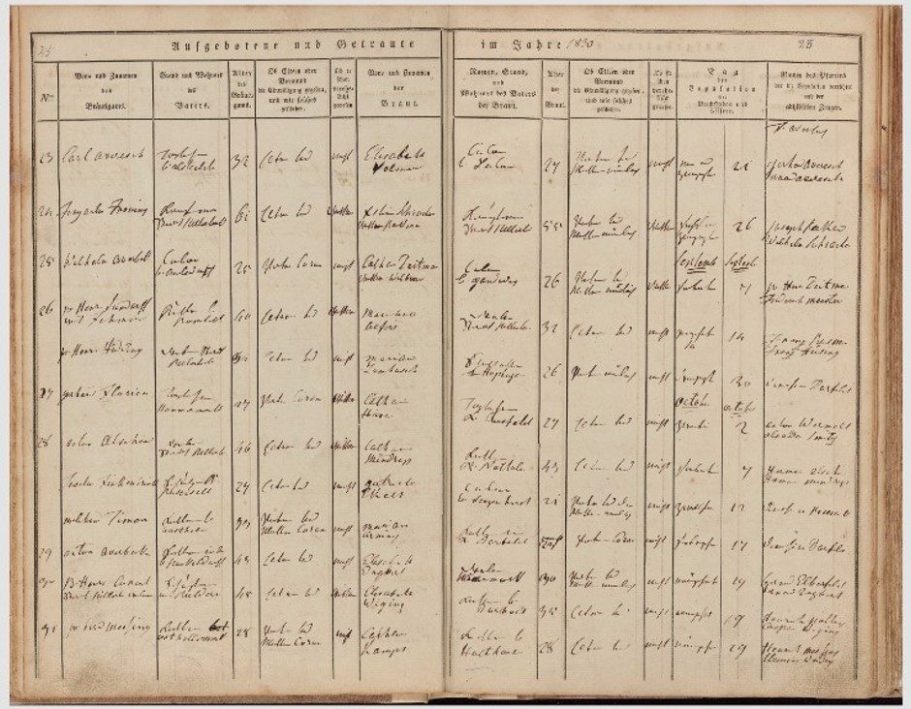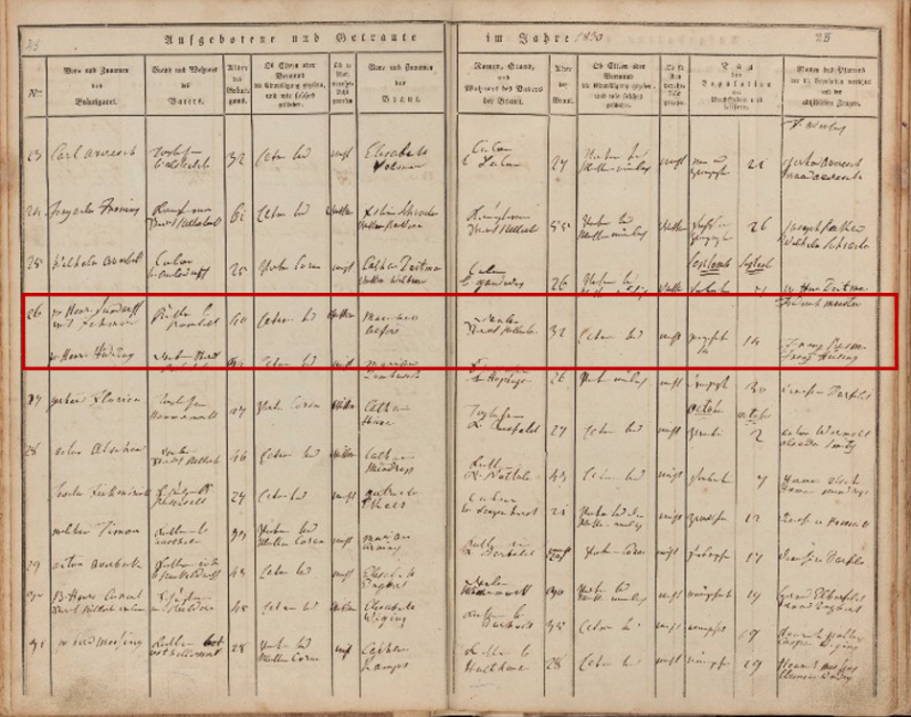How do we research
To trace your German ancestors, we consult a variety of sources, including both primary and secondary materials—whether digitally accessible or available only on-site in archives.
These sources include church records, passenger lists, emigration databases, one-place studies, local chronicles, administrative records, newspapers, old address books, military records, censuses, civil records, and many more.
Thanks to digitalization, a vast amount of genealogical sources are now online, and this number continues to grow. However, if your ancestors came from parishes where this is not yet the case, we are pleased to offer research services in the following church archives near our hometown: the Diocese Archive Münster, Diocese Archive Osnabrück, Diocese Archive Essen, Archdiocese Archive Paderborn, Regional Church Archive Bielefeld, and the Archive of the Church of Lippe in Detmold. In addition to church archives, we also conduct research in community archives, district archives, and others as needed within an 80-kilometer radius of our hometown, Nottuln (District Coesfeld).
Church records are the most important source for German genealogy and, consequently, the source we use most often. To give you a better understanding of this source and our work, we will provide a brief overview and an illustrative example.
Church records
In the German-speaking area, church records were introduced in the 15th century and established nationwide in the 16th century. Even though some were lost over the centuries (many during the Thirty Years' War), they are a marvellously comprehensive source for genealogical research. But what are church books precisely?
The church took note of every birth, baptism, marriage, death and burial. They documented the existence of every individual regardless of status, gender and wealth.
Until 1876, civil statuses were mainly recorded by religious communities. Based on these sources it is possible to trace family roots back over centuries!
Very recently, the churches started area-wide digitilzing and uploading their records.. Hereby, it is possible to conduct genealogy research online without visiting an archive. This way, we can research your ancestors throughout the entire German-speaking area, regardless of where they lived.
What does a church record look like? An example is shown below.


Church record from the 19 century
This is a church record extract from Billerbeck, a small town in Westphalia, Germany, from 1830.
It includes the marriage entry of our ancestors Johann Heinrich Joseph Sundorf and Anna Maria Christina Alfers who became spouses on 14 September 1830.
We will show you step by step what such entry from 200 years ago contains.


Marriage on 14 September 1830
You will find the wedding in question outlined in red. The groom is listed on the right and the bride on the left.
The groom
Johann Heinrich Joseph Sundorf
(1790 - 1870)
(1) ,,26“ Number: 26
(2) „Jo. Henr. Sundorff gnt. Fehmer“ Name: Johann Heinrich Sundorff called Fehmer
(3) „Kötter bei Bombeck“ Social standing of the father: Peasant by Bombeck
(4) „40“ Age: 40 years old

(5) ,,Eltern tot“ Parents: Parents dead
(6) ,,Witwer“ Previously married: Widower
Continuing with the name of the bride…
The bride
Anna Maria Christina Alfers
(1793-1873)
(1) „Maria Anna Alfers“ Name: Maria Anna Alfers
(2) „Weber Stadt Billerbeck“ Social standing of the father: Peasant in Billerbeck
(3) „32“ Age: 32

(4) „Eltern tot“ Parents: Parents dead
(5) „nicht verheiratet“ Previously married: Not previously married
(6) „14. September 1830“ Wedding date: 14. September 1830
(7) „Franz Busman + Franz Hüsing“ Witnesses: Franz Busman + Franz Hüsing

As you can see, church books can tell us a lot about the lives of our ancestors – or in this case, about the second marriage of Johann Heinrich Joseph Sundorf. The only thing the church records leave in the dark is whether the marriage was a happy one.
Contact Us
Phone: +49 176 429 66 180
E-Mail: fehmergenealogy@outlook.de
Address: Wullaweg 7, Nottuln, 48301, Germany